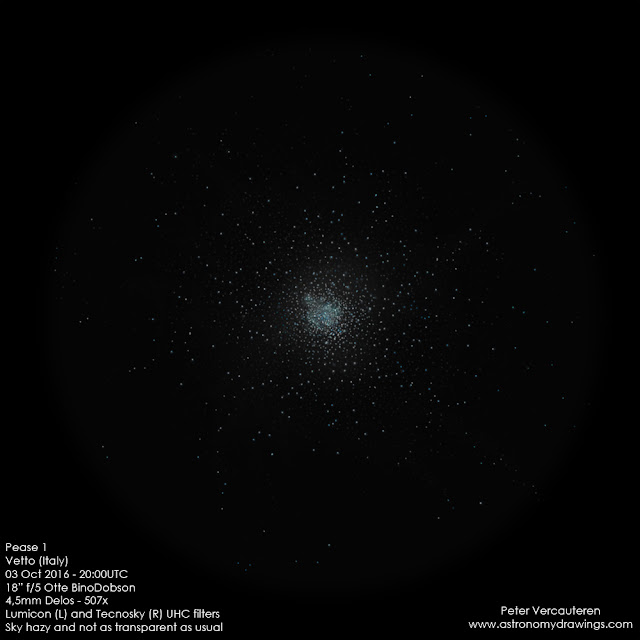Last week I talked about M15, the sparkling glitterball in the constellation of Pegasus. Well, today I'd like to take a deeper look into this beautiful globular cluster because it hides a tiny little secret. You need quite a bit of telescope, clear skies and a sufficiently high magnification in order to spot it between those thousands of bewildering stars but using a nebula filter you can't miss it.
Most nebulae emit a large part of their light in a couple of very specific wavelengths of the visual spectrum, predomiantly ionised oxygen and hydrogen. Stars on the other hand emit light in all wavelengths. If you use a filter that blocks all the light, except for these very specific frequencies, the stars become significantly dimmer and the nebula leaps to the foreground. Such was the case when I magnified the M15 cluster to 507x and screwed the nebula filters on my eyepieces. The stars turned bluish and less bright, whereas a tiny patch near the top-left of the cluster's nucleus seemed to light up. This patch is a planetary nebula right in the cluster's core. It's one out of only four planetary nebulae that have been found inside globular clusters thusfar and was named after its discoverer: Pease 1.
So you see... the life of a star is the same all across the universe: they're born, life their life and when their fuel runs out they die, leaving a beautiful and bright cloud of gas for us to admire.

No comments:
Post a Comment